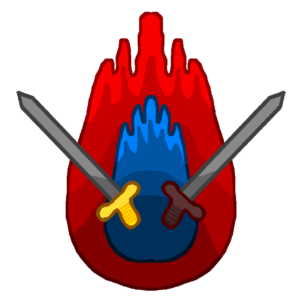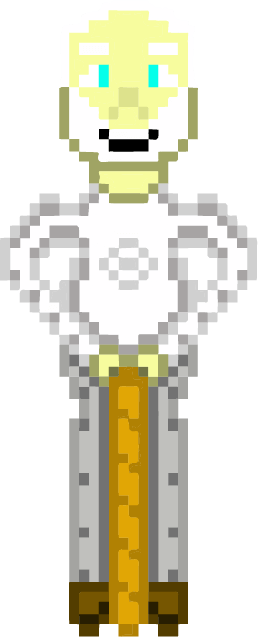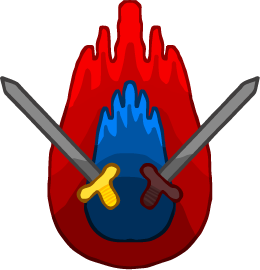Join US
Do you want to build the fantasy world you’ve always dreamed of?
Subscribe to receive notifications when a new post is out and for our monthly newsletter!
You can always unsubscribe anytime.


One vital aspect of building a fantasy world is the lore. Also known as mythology, lore provides information to the audience about the world, whether by listening to people or reading a book. For the audience, fantasy lore reveals how the world wound up in the shape it’s currently in.
Imagine a story takes place in a setting where a great war destroyed the land, killing nearly everyone. You, the audience, see only the survivors rebuilding society with no idea how the war started. You listen to the survivors talk about the war and you find some books that chronicle the conflict’s origins. Piece by piece, you gain a full understanding of the chain of events that led to the world’s destruction.
Lore helps the audience learn more about the world. If done right, it makes viewers want more. So what’s deemed fantasy lore? In this article, we’ll break down what’s commonly known as the building blocks of mythology.
We’ll start with one everyone knows all too well: the backstory.
Taken at face value, the backstory simply depicts the chain of events that led into the beginning of the story. The amount of time varies, it can range from days or months to even years or decades. All important events that shape the story are listed here. The backstory is the most crucial element of fantasy lore.
Referring back to the example mentioned in the previous section, you discover that the war was caused by a dispute between two great powers over a piece of land. Upon learning this, you’re left to wonder why a piece of land caused them to destroy the world. Surely there was something invaluable there not found anywhere else? You put on your investigative hat, determined to find more. You later find that the land in question was a large, hidden island off the shores with an artifact said to hold great power somewhere on it.
Regardless of the medium used to tell the story, the backstory is placed in specific locations in the story. In video games, it’s placed directly at the beginning, with only the relevant information given. As you play through the story, the backstory is expanded upon as you receive more info to help you get the full picture.

Novels do the same thing but they tend to put more info in the beginning. The prologue is used as the vehicle here to introduce the reader to the world they’re getting ready to read. While the backstory is peppered throughout the story and only used to help the reader get context on the situation, a more detailed description can be found in the addendum. Lord of the Rings is a superb example of this, with a treasure trove of information about Middle-Earth’s history found in the pages after the end of The Return of the King.
How much backstory should be put at the beginning or prologue? There’s a delicate balance between giving too much and too little. This is done by design as to not overwhelm the audience with information they don’t consider important. Giving too much and the audience will have a hard time keeping track of it and giving too little can leave them with no understanding of how the world works. You want your audience to want to learn more so finding that sweet spot between the two is key.
What about during the story? Drop some backstory in only when the story needs it and make it easy and digestible for your audience. Again, you have to balance between giving too much and giving too little. Don’t add any more information than what’s needed. Always leave them wanting more!

When it comes to fantasy lore, characters are a goldmine for information. By simply conversing with them, you discover things about the world that you didn’t already know.
Wizards/sages or other wise people typically are well-educated, steeped in the history of the world. In many fantasy works, the sage or wise person has two roles. The first is to tell the hero character what he must do in order to vanquish the villain. This usually is a quest where the hero must go somewhere or gather some objects that will grant him powers to help him defeat the villain.
The second role is to tell the backstory. Though he’s telling it to the hero character, the audience is the real target here. The sage provides the backstory, or usually a part of it only to give the audience what they need to know at that particular moment, at specific moments in the story.
Castles and towns are an invaluable source for fantasy lore. In many instances, characters reveal locations such as castles or rivers or names of certain people to interact with. Skyrim does this exceptionally well. In every city/town, talking with everyone yields you either a quest to do something or talk with a specific person to find out more.
Just because they’re bad doesn’t mean villains aren’t a great source for lore. In fact, they’re one of the most useful. Though they have their own motives, they drop invaluable information to the audience that the sage or wise person deliberately kept from them or didn’t know about, secrets that only they knew.

Another tool to convey fantasy lore is the object. Besides people, objects are used to tell a world’s story. The type of objects used range from swords that have been passed down for generations to books that expand upon the mythos. Objects convey lore in a way characters don’t. Books have official information such as dates of historical events or go into great detail about things such as a group of knights or a king’s reign. Swords and other weaponry passing down from one generation to the next indicates their value to their owners, who feel a kinship with their ancestors who once held them.
Just as there are good objects, there too are bad ones. The One Ring from Lord of the Rings comes to mind. The Ring, created by Sauron, has a history of betrayal, betraying those who owned it after it was severed from Sauron’s hand.
An ancient weapon wielding immense power buried in the sands of time is another instance of a object used for evil. Using said object would bring nothing but ruin upon the land and it was buried deep underground to ensure that it would never be used. The fact that this was built demonstrates that the world of the deep past was violent.
Every object has its own story and every one of them is part of the world. When using an object to convey part of the world’s story, think about how you want to show it and how you want to tell the story behind it.
Fantasy lore is a powerful component in making a world from scratch. If done correctly, it greatly enhances the world, making it feel like a breathing entity and makes the audience crave more. If done wrong, it leaves nothing but confusion and drives away your audience. The backstory, people/characters, and objects are useful instruments to show the lore of the world.
Regardless of the medium used to tell your story, take as much time as you need to put together the essential pieces of info you plan to use as fantasy lore. Get a notebook or type it on your favorite word processor and begin writing it. You’ll be coming back here many times to flesh it out so try to have a good starting point. Before long, you’ll be referring to this numerous times as you work on the story.
Let me know what you think in the comments below. (Note: this is an account-exclusive feature).
If you don’t have one, you can register here. It only takes a few moments of your time!
Liked this article and want to subscribe? All you have to do is fill out the form below and that’s it!
Thanks for reading this and until the next time,
Sunfire
Subscribing means you receive:
You can always unsubscribe anytime.
Do you want to build the fantasy world you’ve always dreamed of?
Subscribe to receive notifications when a new post is out and for our monthly newsletter!
You can always unsubscribe anytime.